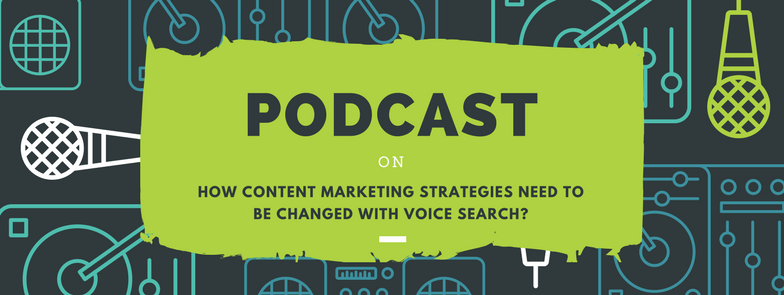Is your website New Year ready? With the year 2018 looming ahead, it is the time to make your website ready for the 2018 SEO game. Here are 18 proven strategies that changed the SEO game for many in 2017 and are going to rule & help improve your website rankings in 2018 too.
- Voice search:
With the increase in the mobile users, it is noted that 20% of the mobile searches are voice queries. So, the rise of the voice search brings in the need to optimize your website for it. To start with it, it important to understand your consumer behavior. Now your keywords targeting will not only be limited to short-tail keywords but you will have to optimize your website for long-tail and conversational keywords. - Dwell time:
Dwell time is the amount of time that your reader spends on your page. It is one of the main factor on which the RankBrain focuses. RankBrain is the Google’s machine learning artificial intelligence system which helps Google in sorting the search results on the basis of user behavior. RankBrain measures the time when someone clicks on a page, stays on that page and then go back. For the top 10 Google results, the average dwell time is 3 minutes and 10 seconds. If a user is spending more than 3 minutes on your website, it signals the Big G that your webpage is relevant to the search query and hence Google will credit your website for the same.
So, it’s the time to optimize your website for the content that can engage your searcher for more than 3 minutes. - Working on Organic CTR:
Another important factors that RankBrain considers is the Organic Click Through Rate. Your website rankings will boost if it attains above-average CTR. Hence the search snippet of your result plays a vital role in increasing the click through rate. Your result should scream “click on me” to save it from getting ignored. - Page Speed:
Making the web faster is what Google aims at. So, if your website is not smooth and the webpage is not loading quickly, resulting in bad user experience Google will devalue your website and a drop in your rankings can be seen. You can check the web performance of your website on both Desktop and Mobile using this link: https://developers.google.com/speed/pagespeed/insights/ and can follow the Google’s recommendations to fix the website and to improve the user experience. - Security:
Secure exchange of information on your website is another ranking factor that Big G considers. Over a period of time, Google is suggesting to get SSL installed on your website as it adds to the trustworthiness factor. Starting October 2017, the browsers has started displaying a Not Secure padlock on the websites not having the SSL installed which can demodulate the trust. So, if you have not yet purchased the SSL, it’s the time to give it a thought. - Featured snippets and Quick Answers:
The “Position 0” of the Google search results has recently been taken by featured snippets and quick answers. So even if your website is at Position 1, viewers will not land on your website and may click on the Google Ads or the result in the featured snippet. The speculations indicate that in 2018 the race will be to get your website ranked at Position#0. So, adding content in Question & Answer format, “how-to” or “what” structure can increase your chances to grab the Google’s #0 position. - Mobile-first index:
As per the recent report, 60% of the Google searches are from a mobile device and this number will only going to increase in the future. Also, Google’s Mobile-first index which is in news for past few months will surely roll-out in coming days. So, you should start preparing for it and should not leave any stone unturned to optimize your website for the mobile. Make sure your website is mobile responsive and passes Google’s Mobile Friendly test. - Structured data:
Converting the raw data into information is what Structured Data Markup language does. Using schema markup or rich snippet, we can serve important information, like Business name, location, logo, phone number, email id, reviews and rating, etc., to the search engines. - In-depth Content/Content Relevancy:
Gone are the days when Google looks for a specific keyword in your Title, Description, H1 tag and Content and mark that page relevant for that particular keyword only. Google now-a-days is much smarter and prefers the websites with in-depth content strategy. While building an in-depth content strategy one must keep in mind Latent Semantic Indexing, since Google is not just focusing on content but also on context. So, your content should not only talk about the keyword but also its related keywords.For example, if you have written an article on “Balanced Diet”, then some of the LSI keywords can be:- Diet Chart
- Diet Food
- Weight Loss
- Recipes
- Brand Mentions (Linkless Linking):
For years, the SEO experts are focusing on building the backlinks but with the changing time, Google has indicated that even the Brand mentions also known as linkless mentions will add an equal weight to your website’s ranking factor. - Video marketing:
With increasing number of users spending more time on YouTube, world’s second largest search engine, it becomes necessary to build your brand’s presence on YouTube. The videos content is more engaging and can satiate the users, so if you have not yet build a strategy to do video marketing, you are ignoring too big. - Visual Content:
Just like videos, visual content is another contender for the 2018 SEO game. Sites like Instagram and Pinterest which works on visual marketing were in trends in 2017 and will continue to rule in 2018 as well. So, add embeddable images in your website content to keep ahead of others in search engine results. - URL Structure:
Your URL structure can tell a lot about your webpage to search engines and users as well. So, just like we were practicing earlier, we should follow the same to keep URLs clean and precise. Do’s & Don’t for selecting the URLs:- Never use capital letters in the URLs
- Never use underscores or other special characters in the URLs instead use hyphens (-)
- Keep URLs short and search friendly
- Try if the keyword can be added in the URL
- Link Building:
Though there are many who believe that off-page backlinking strategy will outdate in coming days. But it is not expected to disappear in 2018, Google will still consider your backlinks counter as one of the ranking factors. The only difference that one could see is the more focus on the quality links. So, instead of just placing your link anywhere that doesn’t add any value, go for niche link building. - Frequency of Content Updation:
How frequently you are updating the content on your website is another signal that Google tracks. With updating the content, we don’t mean changing the content of the webpages but doing some updations in your website like adding blogs, news, events, etc. to signal Google that the website is not a dormant. - Local Listing:
Users prefer local business owners over the others which are not locally near them and hence there is also a rise in the search term “near me”. So, it becomes vital to build your local presence with Google My Business Page. - Location of server:
Since Google works on geographical searches, it is crucial to check your server location to rank higher in that particular location. - Social signals:
Your brand’s presence across major social media platforms like Facebook, Twitter, Google+, Linkedin, Instagram, etc. is another important ranking factor of 2018. With social signals, we not only meant creating a business page there but also posting in content there to grab likes, shares and comments so as to signal effective presence to Google on social media platforms.




